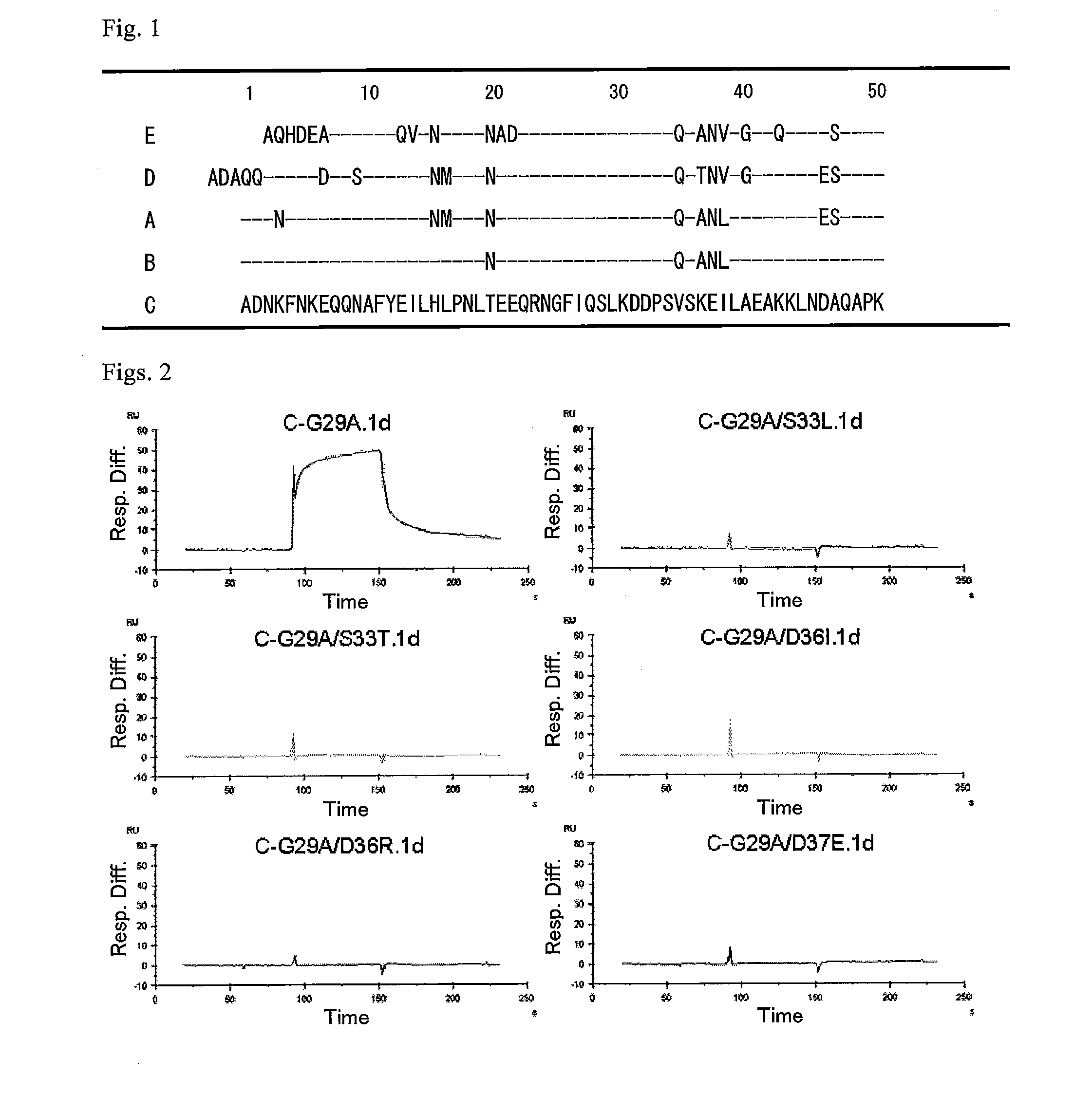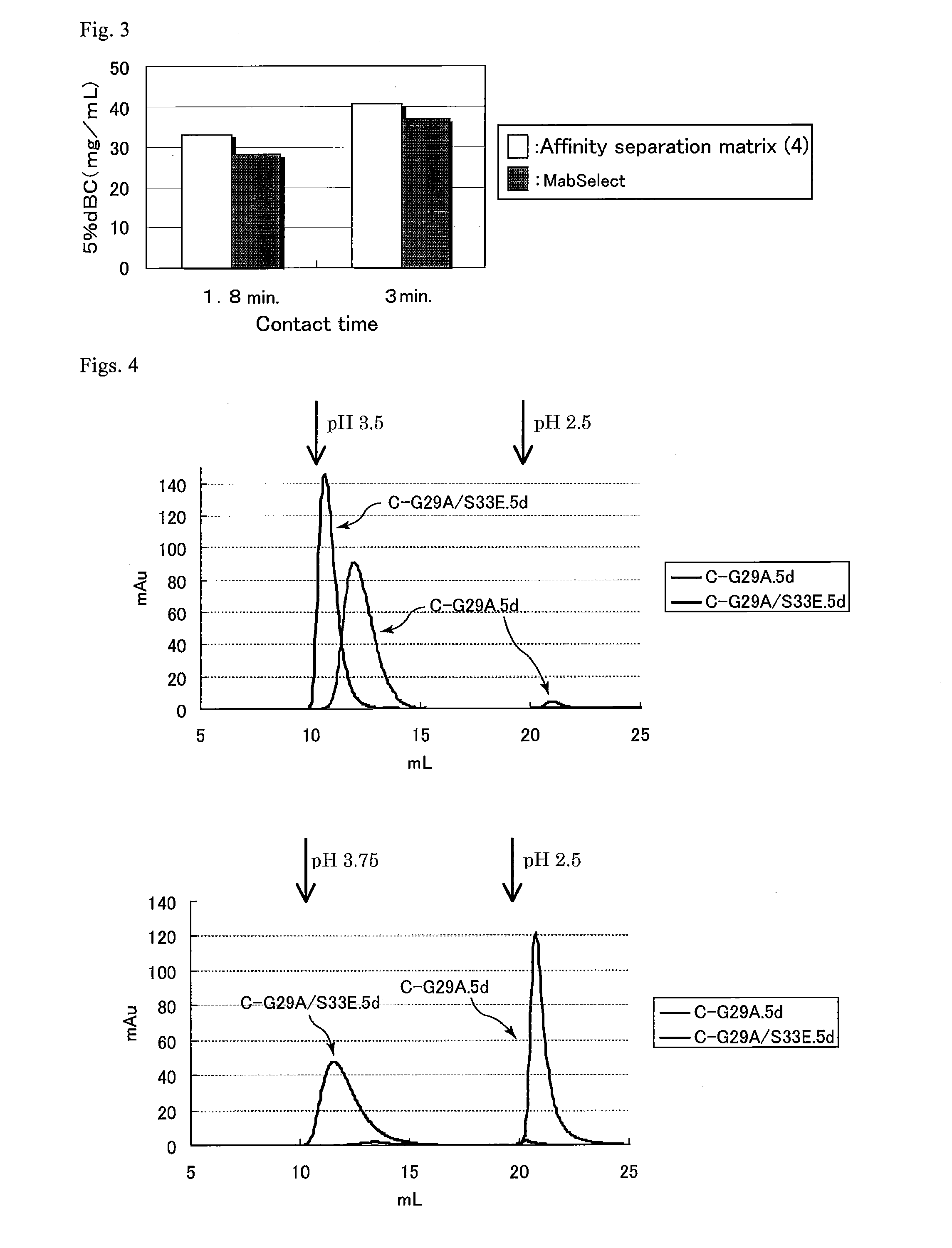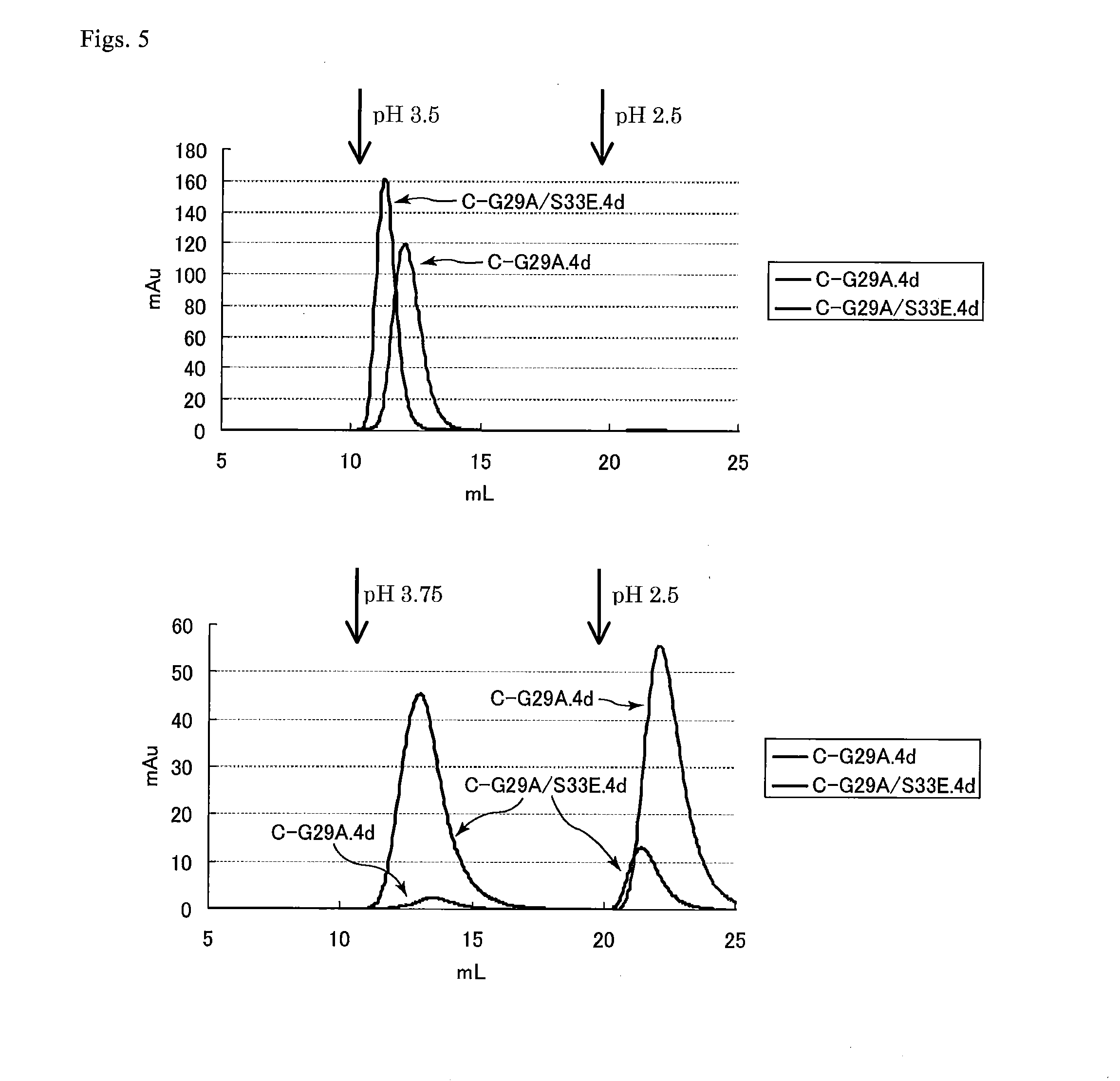Protein capable of binding specifically to immunoglobulin, and immunoglobulin-binding affinity ligand
a technology of immunoglobulin and affinity ligand, which is applied in the direction of peptides, peptide/protein ingredients, peptide sources, etc., can solve the problems of insufficient properties and difficulty in dissociating an antibody binding to the c domain with the use of acids, and achieve excellent antibody dissociation properties and improve separation and purification of antibodies.
- Summary
- Abstract
- Description
- Claims
- Application Information
AI Technical Summary
Benefits of technology
Problems solved by technology
Method used
Image
Examples
example 1
Preparation of DNA Encoding C-G29A. 5d
[0122]A base sequence encoding a protein consisting of five connected C-G29Vs was constructed by reverse translation from the amino acid sequence (C-G29V.5d, SEQ ID No: 11) of the protein. Codons were assigned such that the codon usage frequency of the protein was closer to the codon usage frequency of the cell surface protein HWP, which is expressed in a large amount in Brevibacillus choshinensis HPD31 (Ebisu S., “J. Bacteriol.”, 1990, No. 172, pp. 1312-1320), and that the sequence identity between the base sequences of the five domains was low. The restriction enzyme recognition sites for PstI and XbaI were also prepared on the 5′ side and 3′ side, respectively, of the sequence encoding the five connected domains. The prepared DNA fragment was commissioned from Takara Bio Inc. The sequence of the prepared DNA fragment is shown as SEQ ID No:12.
[0123]The prepared DNA fragment encoding C-G29V.5d was digested with PstI and XbaI (both available fro...
example 2
Preparation of DNAs Encoding C-G29A / S33E.5d, C-G29A / D36R.5d and C-G29A / K35R / D37E.5d
[0127]The same techniques based on quick change mutagenesis as in Example 1 were applied using the oligonucleotide primers of SEQ ID Nos:30 to 59, and the five plasmids each containing a C-G29A-encoding DNA fragment, pUC19-A29-d1, pUC19-A29-d2, pSL301-A29-d3, pSL301-A29-d4, and pSL301-A29-d5 prepared in Example 1, as templates. As a result, plasmids containing DNA fragments encoding C-G29A / S33E, C-G29A / D36R, and C-G29A / K35R / D37E were prepared.
[0128]Subsequently, the DNA fragments were ligated in the manner described in Example 1 so that an expression plasmid pNK3262-C-G29A / S33E.5d containing the DNA fragment (SEQ ID No:61) encoding C-G29A / S33E.5d (SEQ ID No:60), an expression plasmid pNK3262-C-G29A / D36R.5d containing the DNA fragment (SEQ ID No:63) encoding C-G29A / D36R.5d (SEQ ID No:62), and an expression plasmid pNK3262-C-G29A / K35R / D37E. 5d containing the DNA fragment (SEQ ID No:65) encoding C-G29A / K...
example 3
[0129]The DNA base sequences of the expression plasmids obtained in Examples 1 and 2 were determined using a DNA sequencer 3130x1 Genetic Analyzer (Applied Biosystems). Using BigDye Terminator v. 1. 1 Cycle Sequencing Kit (Applied Biosystems) in accordance with the attached protocol, PCR of these plasmid DNAs for sequencing was carried out, and the sequencing products were purified and sequenced. The sequences of the oligonucleotide primers for sequencing were omitted here.
PUM
| Property | Measurement | Unit |
|---|---|---|
| temperature | aaaaa | aaaaa |
| temperature | aaaaa | aaaaa |
| temperature | aaaaa | aaaaa |
Abstract
Description
Claims
Application Information
 Login to View More
Login to View More - R&D
- Intellectual Property
- Life Sciences
- Materials
- Tech Scout
- Unparalleled Data Quality
- Higher Quality Content
- 60% Fewer Hallucinations
Browse by: Latest US Patents, China's latest patents, Technical Efficacy Thesaurus, Application Domain, Technology Topic, Popular Technical Reports.
© 2025 PatSnap. All rights reserved.Legal|Privacy policy|Modern Slavery Act Transparency Statement|Sitemap|About US| Contact US: help@patsnap.com



